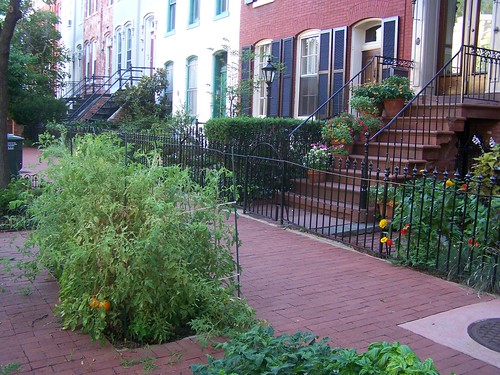Urban plants' role as carbon sinks 'underestimated'
So says the report from the BBC. From the story:
In this study, the researchers used information from satellite data and from field research to survey the amount of vegetation across Leicester - a city with a population of about 300,000 people. The assessment included domestic gardens, public spaces, road verges and derelict industrial land.
The team estimated that 231,000 tonnes of carbon, equivalent to 3.16kg per square metre, was locked away in the city's vegetation - most of which was stored by trees. "Large trees are particularly important carbon stores," said lead author Zoe Davies from the University of Kent. "Most of the publicly owned land across Leicester is grassland. "If just 10% of this was planted with trees, the existing carbon pool across the city could be increased by 12%."
Over the weekend we were in Cambridge, Maryland, and spied a peach tree in a cemetery. The birds and bees were having a field day with the peaches, and many had already fallen off the tree. We picked quite a few and they are tasty. Similarly, at the "beach" in Oxford, there is one sole tree which happens to be a plum tree. The plums were tasty too...
Why can't we include fruit and nut trees as part of an urban forestry and agriculture plan?
-- Home Orchard Society
-- Stella Otto, author of The Backyard Orchardist and The Backyard Berry Book
Labels: food-agriculture-markets, green-environment-urban, urban agriculture




0 Comments:
Post a Comment
<< Home